7 Types of Concrete Mixers & What to Consider When Buying
-
Pete Ortiz
- Last updated:
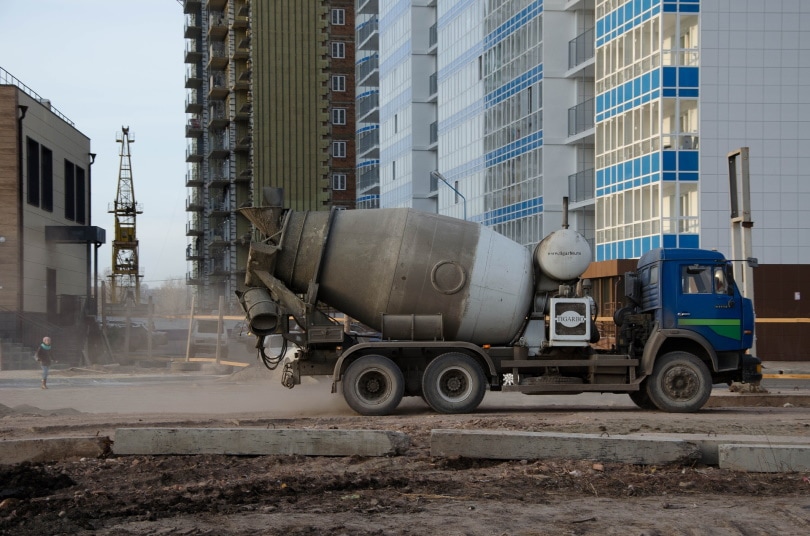
During a construction project, whether it’s a building or a road, you need some essential equipment, such as a concrete mixer. This means you can either decide to buy or rent one, depending on the scale of the project.
If you decide to buy a new concrete mixer, there are many options in the market to pick from. They all come in different shapes, colors, and makes. However, they all perform the same function; mixing concrete.
Your purchasing decision should therefore boil down to the unique project needs as well as your budget.
What Is a Concrete Mixer?
A concrete mixer combines cement, aggregate, and water to produce a good consistency of concrete. Most concrete mixers use a revolving drum to mix all the components. They consist of a motor, a dump wheel, and a tipping handle that lets the tank tilt and pour out the concrete.
Typically, most concrete mixers are mounted at the back of a truck for easier transportation and to make the pouring process easier, especially when working in an extensive area. There are various concrete mixtures, including portable ones, which make the concrete mixing process quick and efficient.
Concrete mixers typically run on gas or electricity.
The 7 Types of Concrete Mixers
There are two main types of concrete mixers in the market, and all concrete mixers fall under either of these two categories—batch mixers or continuous mixers.
1. Batch Mixers
Batch mixers are commonly used for mixing concrete that is collected in batches from time to time. After pouring all the materials into the drum, they are mixed and discharged. The process continues until the required amount of concrete is obtained. Batch mixers either have a drum or pan and mostly have blades.
These mixers are the most commonly used for concrete, especially when undertaking small projects. Flexibility is one of the most popular features of batch mixers as it enables the mixing of powdery ingredients that are chemically sensitive and can change over time. Batch mixers can further be classified as drum-type or pan-type mixers.
2. Drum Type Mixers
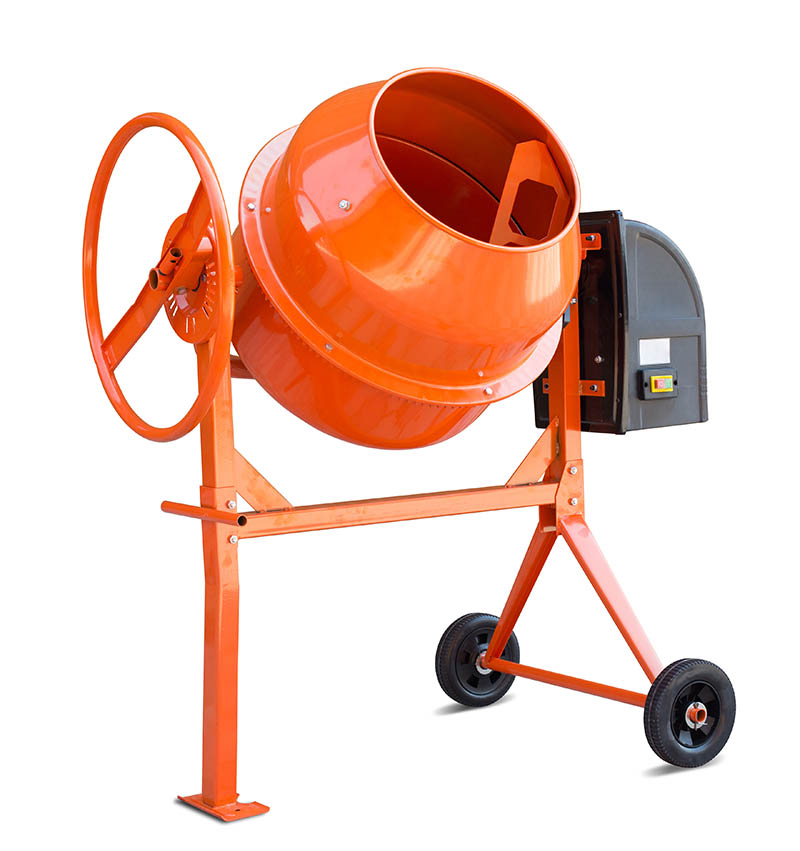
These concrete mixtures consist of a conical-shaped drum which, depending on the brand, can either have a single set of rotating blades or multiple sets. The rotating blades mix, prepare, and discharge the mixture once done.
It uses a paddle with several blades curving in multiple directions, referred to as a swing-blade paddle which enables the drum mixture to maximize liquid mixing and cut down on time spent mixing. Drum mixers are available in several varieties to suit many different needs and applications.
3. Tilting Drum Mixer
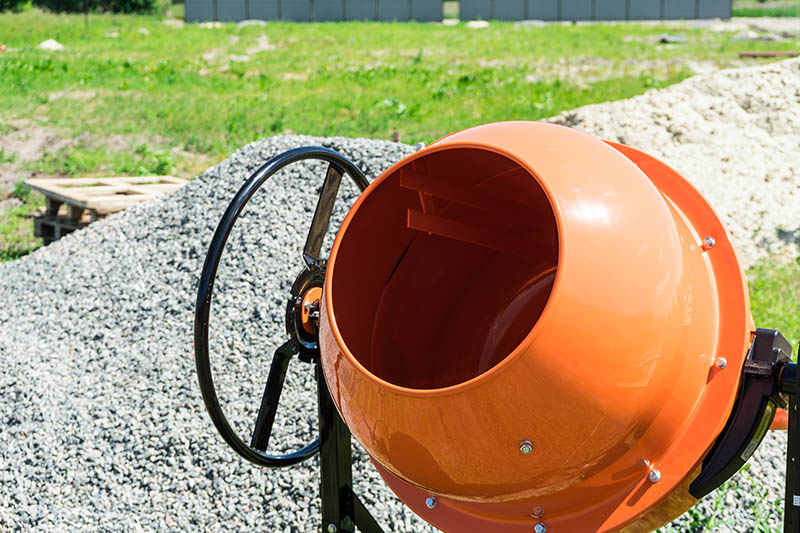
Tilting drum mixers combine all the ingredients while rotating forward and discharge them while reversing the drum. It’s often used to blend semi-dry concrete or plastics that are used in the construction process. These concrete mixtures have many advantages; they produce less noise, have convenient movement, high efficiency, high quality, and productivity.
The efficiency of tilting drum mixers is due to the blades’ angle, the drum’s shape, and the tilting movements. These mixers are suited for preparing concrete with large aggregates and low workability. They are also highly preferred by contractors on large construction sites or applications where the construction work is intensive.
4. Non-Tilting Drum Mixer
This type of mixer does not tilt the drum during the mixing process. The drum rotates on its horizontal axis, and the chute is inclined to the discharge to flow out smoothly. They also have openings on both sides. The ingredients are fed into the drum from one side, and the discharged mixture is collected from the other end of the drum.
The attached blades on this mixer also help during the extraction process by scraping on the sides and bottom. These mixers are best suited for small construction sites.
5. Reversing Drum Mixer
A reversing drum mixer produces concrete in single batches and has to be fed ingredients continuously if you are working on a large project. The drum rotates around its axis as the components are slowly loaded through the large chute at one end of the drum. They are later discharged through the discharge chute at the other end, just like the non-tilting drum mixer.
6.Pan Type Mixers
The pan concrete mixer has a cylindrical pan instead of a conical drum where all the concrete is prepared. These mixers are similar to drum mixers because they also have blades that help with mixing and discharge. For optimum efficiency, the blades are shaped like a star and come in multiple sets.
Pan mixers also have stationary shafts that help the concrete combine together perfectly. They also have scrapers attached to prevent the mortar pouring in from sticking to the pan’s surface. These mixers are also divided into two types:
- A circular pan concrete mixer is constant while the blades rotate on the vertical axis of the pan.
- A circular pan rotates, and the star-shaped blades are stationary.
7. Continuous Concrete Mixers
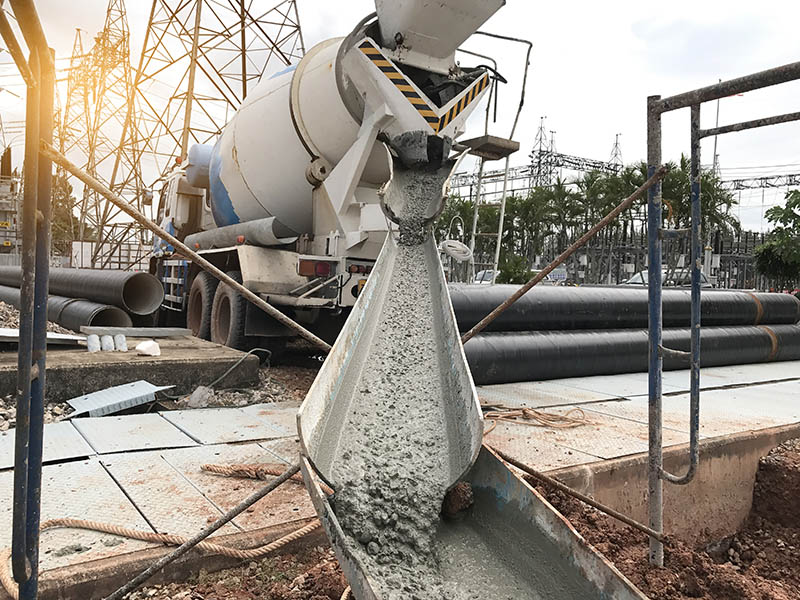
Continuous concrete mixers mix and discharge the concrete until the work is completely done or there is a work break. As the name suggests, it does this continuously. The loading of the materials is done automatically by screw feeders.
These concrete mixers are used during extensive projects such as constructing roads, dams, and bridges since they are stationary and cannot be moved easily.
What to Consider When Purchasing a Concrete Mixer
Concrete mixtures are different, so some will suit your needs better and make the construction process much easier. Therefore, before making a decision, you need to consider your specific needs and which model will best meet them.
Below are some of the vital factors you need to consider:
Drum Volume
When purchasing a concrete mixer, the frequency you’ll use it is a vital factor. Additionally, the size of the project and the amount of concrete needed are important to consider. These factors will help you decide on the necessary drum volume.
For example, if you are working on a small project/ worksite, a 60-liter drum volume is enough. However, if the worksite is large, you should consider getting a concrete mixture with a drum volume of 250 liters.
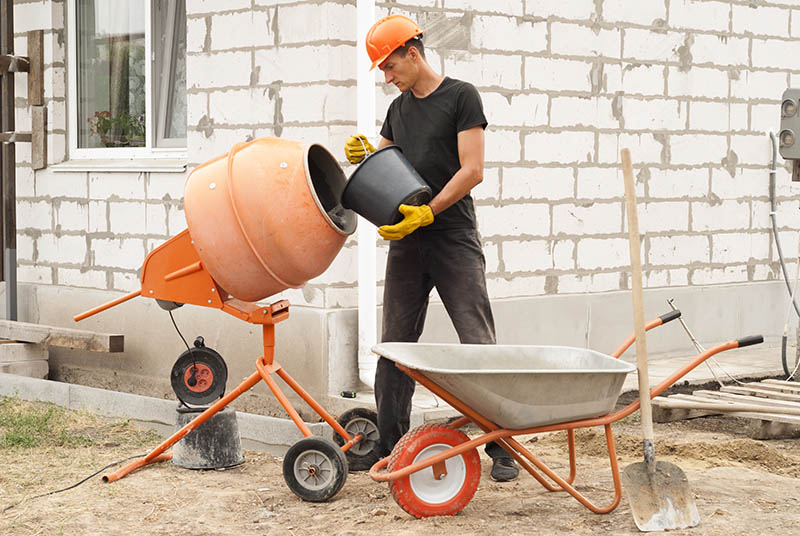
Voltage
Ensure you check the required voltage to run the concrete mixer before making a final decision. If you purchase a powerful concrete mixture or one with a more considerable drum volume, it will typically require power to work efficiently.
Power
The motor of the concrete mixer affects the overall performance of the concrete mixer. A weak engine motor cannot rotate the drum at the required speed to mix high volumes of concrete, potentially damaging the mixer beyond repair. You need to pick the engine power depending on how much concrete you will mix and how often.
Noise Level
The working site will technically influence this decision. You need to consider the neighborhood you’ll be working in. Is it conducive to noise or a noise-free area? If you are working next to a school, hospital, or apartment, you should consider getting a less noise-emitting concrete mixer.
Wheels
Having wheels on the concrete mixer makes moving around the construction site easier. Preferably, the wheels should have a locking frame to prevent the concrete mixer from moving when it’s not supposed to. However, if you are constructing a road or the work site is outdoors, having the concrete mixer attached to a truck is sufficient.
Blades
Most concrete mixers have blades that can either be stationary or rotary. It’s essential to consider this factor depending on how fast you want the concrete mixer to work. Those with rotating blades typically mix the concrete quicker and more effectively, resulting in perfect consistency. They also come in handy during the discharge process, especially when using a pan concrete mixer.
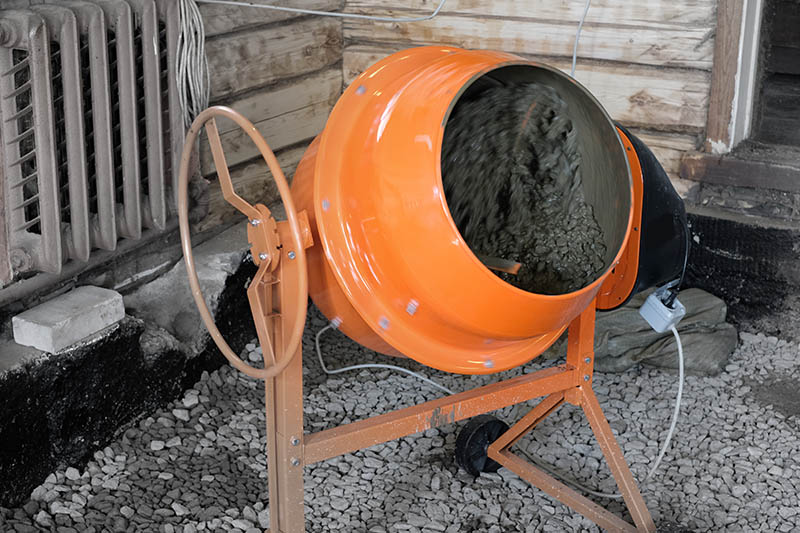
What Is the Best Concrete Mixer?
In your search for the perfect concrete mixer, you need to pay special attention to the engine performance and the build. Everyone’s needs vary, which dictates the best concrete mixer. However, any tough concrete mixtures, especially those that run on electricity, engineered with hard and durable materials to withstand the harsh construction environment are the most ideal. Also, the simplicity of operating goes a long way.
Is a Cement Mixer Worth It?
If you are doing a minor repair or working on an extremely small project, you don’t need a concrete mixer. However, having a concrete mixer can make your work much easier if you are working on a larger project. Also, concrete mixers ensure you produce the ideal concrete mixture.
What Is Concrete?
Concrete is a mixture of several ingredients, including cement, which holds the materials together—aggregates, gravel, sand, or rock—and water which hydrates all these ingredients and helps in workability. Ingredients need to be mixed in the right proportions and achieve the perfect consistency for them to be considered concrete.
Conclusion
Concrete is used in almost all construction processes mainly because of its sturdiness. It’s applied in nearly all architectural feats, from apartments, skyscrapers, modern houses, and dams. Therefore, investing in a sound concrete mixer is a wise idea.
Before looking for the most appropriate concrete mixer for sale, ensure you conduct adequate research to avoid ending up with a low-quality concrete mixer. Huge projects need massive amounts of concrete, and the concrete mixer has to meet those requirements.
Featured Image Credit: oknesanofa, Pixabay
Contents


